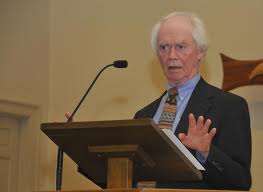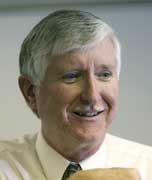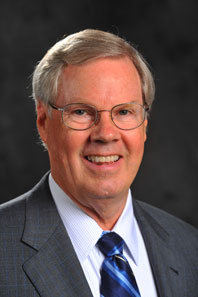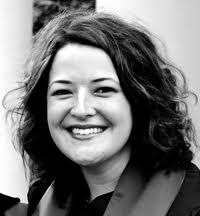Legacies of Southern Seminary
Friday, March 4, about 35 people gathered in Louisville, Kentucky only two miles from The Southern Baptist Theological Seminary (SBTS) to think about the legacies of the school.* We met at Highland Baptist Church, one of the many churches in Louisville that is itself a legacy of the oldest Southern Baptist seminary. But of course in that very statement are numerous cracks and fissures in the story. . . .
In fact the changes to the seminary and to the Southern Baptist Convention (SBC) as a whole, are still contested matters. It is referred to alternately as a “conservative resurgence” and a “hostile takeover” and sometimes simply “the controversy.” What happened in the SBC between 1979 and 2000 has many other names, histories and assessments, both partisan and academic. This story is the focus of my own forthcoming book with Baylor Press. The working title is Anatomy of a Schism: How Clergywomen’s Narrative Reinterpret the fracturing of the Southern Baptist Convention.
The changes at SBTS were a significant, but certainly not the entire story, of the changes in Baptist life which embodied both brokenness and renewal. On Friday, four professors from SBTS spoke briefly about their experiences in the late 1980s and early 1990s. Other professors, former students and interested observers gathered around to listen. The other panelist was a young woman who was born after the Baptist controversy was underway. She has followed her call to ministry by a path that wound its way through the SBTS legacies in interesting ways. Missing from the panel was the voice of the students who were educated during the era when the seminary changed hands from Autonomist to Biblicist control.** Michelle Tooley was scheduled to speak from this perspective, but was unable to attend.
Here I simply want offer a few highlights of the stories and analysis from each speaker.
The conversation was hosted graciously by Joe Phelps (pastor of Highland Baptist Church) and Larry McSwain (professor and associate dean at McAfee School of Theology).
 E. Glenn Hinson began the day with a devotion in which he described what happened to him during the years when SBTS was under siege. His story, he says, follows Douglas Steere’s notion that “life’s interruptions are often God’s opportunities.” What a great understatement on both counts! His life and that of the entire seminary was more than just interrupted. For instance in the three years I was a student (1990-93) I counted 19 of my professors who departed from SBTS to other institutions. (Many seminaries don’t even have 19 faculty.) It was more than a fourth of the total, and represents a kind of unprecedented turn over. In the second sense, God’s opportunities significantly understates the kind of renewal to theological education that Baptists experienced as a result of the upheaval to this and the other SBC seminaries. More than a dozen new schools and Baptist houses of study grew up from the diaspora of ideas and teachers which were flung out from Southern. Many of those new schools are led and staffed by former SBTS faculty and/or graduates. Hinson himself has taught at both the Baptist Seminary at Richmond and the Baptist Seminary of Kentucky.
E. Glenn Hinson began the day with a devotion in which he described what happened to him during the years when SBTS was under siege. His story, he says, follows Douglas Steere’s notion that “life’s interruptions are often God’s opportunities.” What a great understatement on both counts! His life and that of the entire seminary was more than just interrupted. For instance in the three years I was a student (1990-93) I counted 19 of my professors who departed from SBTS to other institutions. (Many seminaries don’t even have 19 faculty.) It was more than a fourth of the total, and represents a kind of unprecedented turn over. In the second sense, God’s opportunities significantly understates the kind of renewal to theological education that Baptists experienced as a result of the upheaval to this and the other SBC seminaries. More than a dozen new schools and Baptist houses of study grew up from the diaspora of ideas and teachers which were flung out from Southern. Many of those new schools are led and staffed by former SBTS faculty and/or graduates. Hinson himself has taught at both the Baptist Seminary at Richmond and the Baptist Seminary of Kentucky.
 Gerald L. Keown, now associate dean at Gardner-Webb’s School of Divinity, spoke next about his “emotionally intense” even “gut wrenching” experience of serving on a committee made up of seven faculty and seven trustees with the task of reaching some sort of compromise. The committee was assembled by SBTS president Roy Honeycutt. He tried to lead the group to find common ground by sharing the deepest commitments that had formed them as people of faith. This proved nearly impossible because the starting points were so remarkably different and the emotional atmosphere of the meetings was so charged. Eventually they reached a compromise of hiring “conservative evangelical scholars” in an effort to “bring balance” the existing faculty. Several faculty were hired under these auspices, and as Keown pointed out, they proved to be excellent colleagues, who themselves were not in the end conservative or evangelical enough to suit the next president.
Gerald L. Keown, now associate dean at Gardner-Webb’s School of Divinity, spoke next about his “emotionally intense” even “gut wrenching” experience of serving on a committee made up of seven faculty and seven trustees with the task of reaching some sort of compromise. The committee was assembled by SBTS president Roy Honeycutt. He tried to lead the group to find common ground by sharing the deepest commitments that had formed them as people of faith. This proved nearly impossible because the starting points were so remarkably different and the emotional atmosphere of the meetings was so charged. Eventually they reached a compromise of hiring “conservative evangelical scholars” in an effort to “bring balance” the existing faculty. Several faculty were hired under these auspices, and as Keown pointed out, they proved to be excellent colleagues, who themselves were not in the end conservative or evangelical enough to suit the next president.
Keown describes President Honeycutt during the late 1980s as unflinchingly devoted to protecting the faculty and vision of the seminary as a place of excellent theological education. One outcome of that vision and commitment even in the face of relentless attacks on the character and competence of the faculty was a sort of shared trust and loyalty among the faculty. And most significantly that trust and loyalty resulted in an amazing education for hundreds of students even amidst the highly charged atmosphere.
While Keown told this part of the story I felt a little like the adult child just learning about how my collective parents were facing even greater crises than we knew, and further impressed about how they managed to continue providing a peaceful and trustworthy home for budding young Baptists. We all knew there was so much going on behind the scenes. And as students we wasted no time organizing ourselves in support of our faculty and in protest and resistance to trustee attacks. Yet we managed on the whole to go to class, study, learn, pass incredibly hard tests, write papers, practice ministry, and become ourselves a significant portion of the SBTS diaspora. As I often say “my entire formation for ministry from high school through seminary was in the crucible of conflict.” Thankfully, I didn’t face that alone.
 Bill J. Leonard took this opportunity to offer his usual good humor and thoughtful analysis of the seminary’s situation from a historical perspective. He described the ways SBTS’s role in an “almost Christian century” of Baptist progressivism from 1890-1990. He described the slow unfurling of Modernity into and upon the institutional life of Baptists as a living between self-understandings of church and sect. On one hand Southern Baptists were the privileged Protestant mainstream of the South, with big brick churches in nearly every town and along every byway. On the other hand, says Leonard, Southern Baptists are a highly sectarian and pietistic people who use a populist rhetoric to hold together Southern culture and religious practice.
Bill J. Leonard took this opportunity to offer his usual good humor and thoughtful analysis of the seminary’s situation from a historical perspective. He described the ways SBTS’s role in an “almost Christian century” of Baptist progressivism from 1890-1990. He described the slow unfurling of Modernity into and upon the institutional life of Baptists as a living between self-understandings of church and sect. On one hand Southern Baptists were the privileged Protestant mainstream of the South, with big brick churches in nearly every town and along every byway. On the other hand, says Leonard, Southern Baptists are a highly sectarian and pietistic people who use a populist rhetoric to hold together Southern culture and religious practice.
He described a kind of progressivism that lived at Southern Seminary as having multiple roots (from Rauschenbusch’s social gospel to Oberlin evangelicalism) and remaining diverse in its expression. He also pointed to the incredibly slow pace that progressivism took in flowering among Baptists. For example it took the entire century, as he is describing it, to reach even an inkling of gender or racial parity. He attributes this lag significantly to the fact that the founders of Southern Seminary not only defended the rights of slave-owners, they themselves were slave-owners. This fact has haunted the institution interminably. As founding dean of Wake Forest’s Divinity School, Leonard pushed that progressive impulse further out toward its logical conclusions. Part of the legacy of SBTS was to keep going – if slowly – in the logical directions of the progressive agenda slowly explored at the school.
 R. Alan Culpepper, now dean of the McAfee School of Theology, turned his attentions to the course set for the seminary by several early twentieth century SBTS faculty. From figures like E.Y Mullins, W.O. Carver and A.T. Roberson, the school was shaped into an ethos, he argued, that held together deep faith and conviction on one hand and committed, critical scholarship on the other. This “confidence in faith and scholarship,” as Culpepper summed it up, was what shaped the classrooms of the middle decades of the twentieth century. He worries that the confidence in both faith and scholarship have been undermined in the last decades of the twentieth century and into the present one. He wonders: what might stir up the prophetic courage that will “inflame the passions” of Baptists again?
R. Alan Culpepper, now dean of the McAfee School of Theology, turned his attentions to the course set for the seminary by several early twentieth century SBTS faculty. From figures like E.Y Mullins, W.O. Carver and A.T. Roberson, the school was shaped into an ethos, he argued, that held together deep faith and conviction on one hand and committed, critical scholarship on the other. This “confidence in faith and scholarship,” as Culpepper summed it up, was what shaped the classrooms of the middle decades of the twentieth century. He worries that the confidence in both faith and scholarship have been undermined in the last decades of the twentieth century and into the present one. He wonders: what might stir up the prophetic courage that will “inflame the passions” of Baptists again?
By the time I had heard each of these professors speak, I was finding myself thinking how they were themselves shaped by the same crucible of conflict in which I was shaped. And I was thinking about how they, and a dozen more of their colleagues around the South, are collectively articulating a kind of Baptist way of thinking and acting that they have spent their careers trying to entrust to generations of students. They each have a different take on it, but it goes something like this . . . They want Baptists to be faithful and thinking, prophetic and courageous, scholarly and pious. They have delivered that vision into their writings and classroom teaching, institution shaping and renewal movements of the last twenty years. Diaspora. Seedbed. Scholarly oriented prophets and priests. Still haunted by constructions of gender and race, trying to face the demons of exclusion with success ranging from moderate to impressive.
 And then came the final speaker of the day, Emily Hull McGee. She grew up without knowing life before the Baptist battles or the schism. It was always part of her world, her history. She is the daughter and granddaughter of Baptist professors and pastors. She even joked about joining the “family business.” She is a graduate of Wake Forest Divinity School and serves on the pastoral staff at Highland. She was obviously so comfortable and at home speaking in the sanctuary where she regularly leads worship. She is clearly smart and talented and articulate. Emily’s ministry is the fruit of many seeds planted by the professors who had just spoken and scores of others. Her work is part of the legacy of SBTS, even as she works in the shadow of a very changed school. Emily said she went to Wake Forest because she “didn’t want it to be an issue that I was a woman.” And she is right. It is less of an “issue” at WF than it was SBTS twenty years ago. And I think she may also discover (if she hasn’t already) that although it may be more subtle, it is still an issue. Everywhere.
And then came the final speaker of the day, Emily Hull McGee. She grew up without knowing life before the Baptist battles or the schism. It was always part of her world, her history. She is the daughter and granddaughter of Baptist professors and pastors. She even joked about joining the “family business.” She is a graduate of Wake Forest Divinity School and serves on the pastoral staff at Highland. She was obviously so comfortable and at home speaking in the sanctuary where she regularly leads worship. She is clearly smart and talented and articulate. Emily’s ministry is the fruit of many seeds planted by the professors who had just spoken and scores of others. Her work is part of the legacy of SBTS, even as she works in the shadow of a very changed school. Emily said she went to Wake Forest because she “didn’t want it to be an issue that I was a woman.” And she is right. It is less of an “issue” at WF than it was SBTS twenty years ago. And I think she may also discover (if she hasn’t already) that although it may be more subtle, it is still an issue. Everywhere.
Yes, progressive Baptists have come a long way. But we continue to be haunted by our own history. And gender and race are two of the most central identity markers of our time and cultural space. We can’t escape them, but by the grace of God we don’t necessarily have to live captive to our history or the issues that linger and try to define us. We can take the better portions of our legacy and keep hearing the invitation to find ways to be Baptist, to confess our faith and our faults, to seek and offer forgiveness, to grieve the limits of our past, and reach toward the best vision of being God’s people in the world.
- The gathering was sponsored by the Southeastern Region of the National Association of Baptist Professors of Religion.
** In Anatomy of a Schism and other prior publications I’ve chosen the terms Autonomists and Biblicists the describe the two parties, which split and polarized the denomination.



